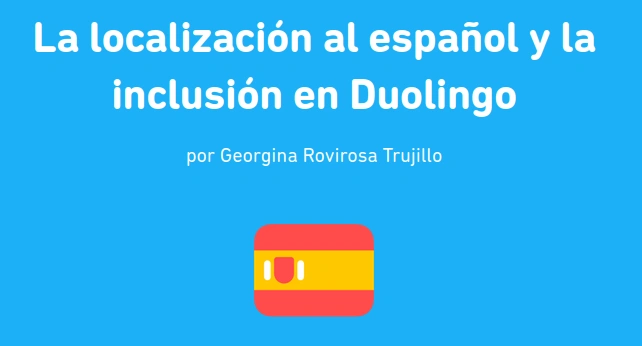How can I learn two languages on Duolingo?
Learning two languages on Duolingo is a challenging task but completely achievable with the right strategy.

Learning a new language can be an exciting and rewarding challenge. Duolingo, one of the most popular language learning apps, offers an accessible and fun way to acquire new linguistic skills. But what happens if you want to learn two languages at the same time? This article will explore effective strategies to make the most of Duolingo while learning two languages simultaneously.
Set Clear Goals
Before diving into learning two languages, it is essential to set clear goals. This will not only help you stay focused but also allow you to measure your progress.
Define Your Objectives
Why do you want to learn these two languages? Perhaps you want to travel, improve your job opportunities, or simply enjoy the culture of a new country. Whatever your reason, having a specific goal will keep you motivated.
Moreover, it is important that your goals are achievable and measurable. For example, you might aim to hold a 10-minute conversation in each language by the end of three months. This will not only give you a concrete target but also allow you to celebrate small achievements along the way, which can be a great boost to your motivation.
Establish a Study Schedule
Time is a valuable resource. When learning two languages, it is crucial to organize your time effectively. Dedicate specific time blocks for each language. For example, you could study one language in the morning and the other in the afternoon. This will help you avoid confusion and focus better on each language.
Additionally, consider incorporating different learning methods into your schedule. Listening to music, watching movies, or reading books in the language you are learning can make your study more dynamic and entertaining. Alternating between these activities will not only enrich your vocabulary but also help you become familiar with pronunciation and grammatical structures in a more natural way.
Use Duolingo Effectively
Duolingo offers a variety of tools and resources that can be leveraged to learn two languages. Knowing how to use these tools can make a difference in your learning process.
Create Two Profiles
One option for learning two languages on Duolingo is to create two different profiles. This will allow you to have a more organized approach and avoid mixing vocabulary and grammar. Each profile can be dedicated to a specific language, making it easier to manage your lessons and progress.
Take Advantage of Personalized Lessons
Duolingo offers personalized lessons based on your skill level and progress. Make sure to take advantage of this feature for each language. This will allow you to work on areas where you need more practice, whether it be vocabulary, grammar, or pronunciation.
Use the "Practice" Feature
The "practice" feature on Duolingo is a valuable tool for reinforcing what you have already learned. Dedicate time to practice both languages regularly. This will not only help you retain information but also allow you to identify areas where you need improvement.
Integrate Learning into Your Daily Life
Language learning is not limited to lessons in the app. Integrating the language into your daily life can be an effective way to improve your skills.
Consume Media in the Target Language
Listening to music, watching movies, or reading books in the languages you are learning can be very beneficial. This will not only help you become familiar with pronunciation and the structure of the language but also make learning more enjoyable. Look for content that interests you and is in the language you want to learn.
Conversations with Native Speakers
Practicing with native speakers is one of the best ways to improve your language skills. Look for language exchange groups in your area or online platforms where you can converse with people who speak the languages you are learning. This will not only help you improve your fluency but also allow you to learn about different cultures.
Maintain Motivation
Learning two languages can be overwhelming at times, so it is crucial to maintain motivation throughout the process.
Celebrate Achievements
It is important to acknowledge your achievements, no matter how small. Every time you complete a lesson or achieve a goal, take a moment to celebrate it. This will help you maintain a positive mindset and keep moving forward.
Join Learning Communities
Joining learning communities online or in person can be an excellent way to stay motivated. Sharing your experiences and challenges with other students can provide you with support and new ideas to enhance your learning.
Overcome Challenges
Learning two languages at the same time can present unique challenges. However, with the right strategies, these challenges can be overcome.
Avoid Confusion Between Languages
It is common to get confused between two languages, especially if they are similar. To avoid this, make sure to dedicate enough time to each language and practice regularly. It can also be helpful to do exercises that distinguish between the two languages, such as writing sentences in each and then reviewing them.
Manage Study Time
Time can be a limiting factor when learning two languages. Ensure you manage your time effectively, prioritizing your lessons and practice. Use tools like calendars or time management apps to stay organized.
Additional Learning Resources
In addition to Duolingo, there are numerous resources that can complement your language learning. These resources can offer you different approaches and techniques that will enrich your experience.
Complementary Apps
There are many apps available that can help you learn vocabulary, grammar, and pronunciation. Some of these apps focus on conversation practice, while others offer grammar exercises. Research and find those that best suit your needs.
Books and Online Courses
Textbooks and online courses are valuable resources for language learning. Look for books that focus on the languages you are learning and consider enrolling in online courses that offer a more structured approach.



























